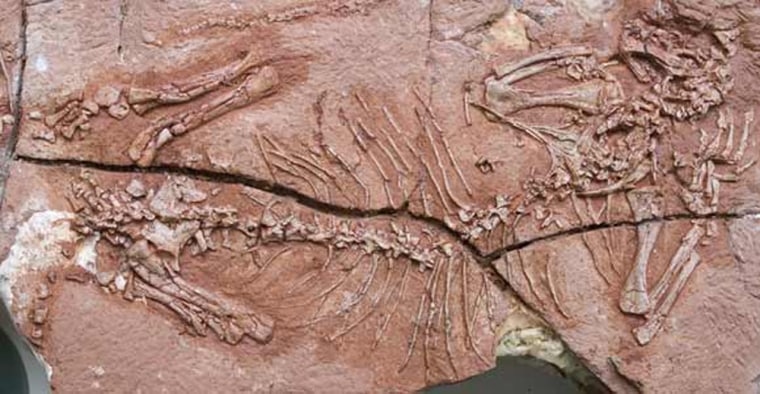The world's first known tree-dwelling vertebrate has just been identified, according to a new study. The tiny, agile animal lived 30 million years before the first dinosaurs and was a distant relative of mammals, including humans.
More than 15 near-complete skeletons of the 260-million-year-old animal, named Suminia getmanovi, reveal that it was built for an arboreal lifestyle.
"As the first tree-climbing vertebrate, Suminia had very long fore and hind limbs, with especially long hands and feet," lead author Jorg Frobisch told Discovery News.
"In particular, its long fingers, or digits, contributed to these large hands and feet," added Frobisch, a Field Museum paleontologist. "It further had long, strongly-curved claws — terminal phalanges — that helped with clinging onto tree trunks and branches."
He and co-author Robert Reisz of the University of Toronto made these determinations after studying multiple skeletons, which were encased in a big, Late Paleozoic mudstone block excavated from central Russia.
A few other previous specimens allowed the species to be named and briefly described in 1994, but little was known about its appearance and behavior.
The recent analysis, outlined in the latest issue of the Proceedings of the Royal Society B, shows the vertebrate was about 20 inches long from its nose to the tip of its grasping tail. It had an opposable thumb and belonged to a class of animals known as the Synapsida.
The word "synapsid" comes from the name of an opening behind the eye socket. Only one other group, mammals, possesses this opening, thought to have provided space for jaw muscles needed for chewing, according to information provided by the American Museum of Natural History, which supports the human-Synapsida connection.
"Non-mammalian synapsids were formerly unofficially known as 'mammal-like reptiles,' but they are actually not at all reptiles, but are more closely related to mammals," Frobisch said, adding that Suminia indeed "is a distant relative of mammals."
Other Paleozoic synapsids included Edaphosaurus and Dimetrodon, which both looked somewhat like a cross between an iguana and a dinosaur with a boat sail tacked on its back.
Carnivorous predators also lived in the same region as the little tree climber, but they were not well equipped for ascending trees. As a result, the researchers think vertebrates headed for the trees not only to escape hungry predators, but also to move away from massive ground-dwelling herbivores that must have gobbled up most of the quality ground-level plants.
Frobisch explained that before this first known tree-dweller emerged, "terrestrial vertebrate communities were composed of various-sized predators and relatively few plant-eaters, with most of the food resources being provided by insects and aquatic organisms."
Slightly later terrestrial ecosystems more closely matched what is seen on Earth today: large numbers of herbivores supporting relatively few top predators. In this environment, some species became ecological specialists, with some animals evolving a burrowing lifestyle and others, like Suminia, literally heading for the trees.
"Therefore, this study provides the first evidence in the fossil record of food partitioning between small climbing and large ground-dwelling plant-eaters," concluded Frobisch.
The pre-dinosaur mudstone slab containing the analyzed skeletons is now housed at the Yuriy Orlov Paleontological Museum in Moscow.
